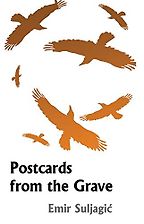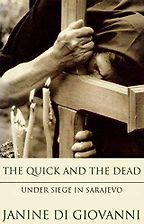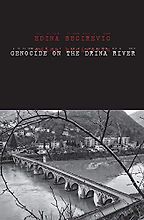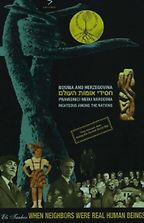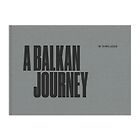Before we get on to your books on Bosnia tell us quickly about the Post-Conflict Research Center (PCRC). When was it founded and why?
The Post-Conflict Research Center was founded in 2010. I had worked previously for 10 years as a freelance journalist and court reporter from the Hague Tribunal, and a couple of years as a research associate working at the University of Sarajevo, researching crimes against humanity in international law. All that experience gave me the idea of establishing a non-governmental organization more focused on youth and education, rather than the traumatic experiences of victims and survivors. The idea behind the establishment of the Center probably comes from my own personal trauma of growing up as a teenager under the siege of my hometown, witnessing all the horrors of war on a daily basis.
As the reporter at the Hague Tribunal, I spent eight years trying to put testimonies into written text, and to give names and identities to those who had been killed during the war and genocide. Bearing this responsibility of witnessing these stories probably did bring on some post-traumatic stress. I wanted to run away from this personal experience and traumatic past and look to do something more hopeful and cheerful while presenting these stories to a broader public. I thought that we should have a non-governmental organization that would focus on peace education, primarily working with young people, but dedicated to non-conventional and more innovative approaches toward peacebuilding and conflict prevention. That is why we started to use new methods in peace-building education; by using art, photography and new technologies, we develop multimedia projects that incorporate storytelling and historical remembrance.
“We had lived together in peace for decades”
What we are trying to achieve at the Post-Conflict Research Center is to cultivate a culture of peace in the Western Balkan region, but also prevent violent conflict in the future. Our work is not just based in Bosnia and the grassroots level, we are also working regionally throughout the former Yugoslavia or Western Balkans and internationally. We understand that a regional approach toward peacebuilding and conflict prevention is necessary, given that all these countries of the former Yugoslavia were affected by conflict in the 1990s. We cannot work on peacebuilding if we just work through a country-by-country approach. That’s our story.
Let’s move on to the books. The first one up is Postcards From the Grave by Emir Suljagic. Why have you chosen this one?
I chose this one because in 1995, when I was 14 years old, my hometown Kladanj became the first free territory under the control of the Bosnian Army, and welcomed refugees who were fleeing their homes in Eastern Bosnia from April 1992 until July 1995 when the genocide in Srebrenica was committed. That is probably how I ended up doing all this work. My childhood was marked by listening to terrifying stories about war crimes, killings and rape. During the war, my hometown was under siege, bombed and shelled, with no proper food and electricity and with a large number of refugees—it was a large humanitarian disaster. Women during the war were incredibly innovative, making food from things you’d not even imagine could be food. Then, in July 1995, my mum brought me to my elementary school which had been turned into a refuge for people fleeing genocide in Srebrenica. My mum made some rice cookies with jam and she delivered them to my elementary school along with some clothes. Then she told me that the Srebrenica genocide had taken place. That was the first time that I’d heard the word ‘genocide’. I didn’t know the definition. But during this July, it was really hot and we ended up in my sports hall, which I had previously played sport in, seeing hundreds of women and children on the floor crying or losing consciousness and constantly speaking about their men, their brothers and fathers and how they didn’t know what had happened to them.
Srebrenica and that moment really did mark my life. This book is an incredible, intimate, personal testimony and historical memoir written by Suljagić. He was actually a refugee in Srebrenica fleeing from the neighbouring city of Bratunac, during the siege of 1992-1995. He came from a neighbouring village, Voljavica, in eastern Bosnia. The army of the Republika Srpska was deliberately destroying the whole area of eastern Bosnia, with the intent of killing around 40,000 people. The United Nations proclaimed Srebrenica a safe zone in April 1993, guaranteeing that they would protect civilians. The army of BiH of that area gave up weapons and was really expecting to be protected but it did not happen. It was neither safe nor protected. Instead, genocide was committed.
“Srebrenica and that moment really did mark my life”
Suljagić was 17 when he got a job at the UN base because he knew a few words of English. He worked as a UN interpreter which allowed him to personally witness the horror and atrocities of the war and later the genocide. He lived through these three years of the siege of Srebrenica, through the hardship, seeing all these people suffer from hunger, being under constant fear of shelling of the beleaguered enclave, systematic killings, and barred food convoys as the army of the Republika Srpska was trying to take over the city. This is exactly what the book recounts: the absurdity of daily life in the besieged enclave until July 11, 1995 when around 30,000 unarmed refugees were handed over to their executioners by the very UN troops that were supposed to keep them safe.
He wrote this book to witness what he and his people went through and survived in eastern Bosnia, to witness what his citizens endured, from the enforced conscription of civilians to the front lines, to attempts to maintain connections with civilisation. He’s really specific. As a UN interpreter, he survived the massacre at Potočari, and he was a witness to what happened in Srebrenica, including the failure of the international community, especially the UN and the Dutch battalion, in allowing one of the darkest moments of human history to happen. He witnessed this final bloody chapter in July when the men from the UN base in Potočari were separated from their families and taken to the Zvornik area, where they were executed and thrown into mass graves across the region of eastern Bosnia. Suljagić was the one who tried to draw up a list of 239 men, who were in the UN base, to at least try to save their lives. But, unfortunately, he later understood that these men were taken away and killed.
The sharpness and richness of the book arises from his personal testimony and reminiscence of those ruthlessly killed during the genocide. The book also brings to the surface the issue of missing persons and uncovering of their remains in mass graves through Suljagić’s fight to find the remains of his father who was killed in 1992. It brings us a broader picture of genocide and a historical contribution to identifying found remains—the book showcases how innovative DNA forensic science created in 2000 by the International Commission on Missing Persons (ICMP) solved the grisly conundrum of identifying each bone so that grieving families might find some closure.
Get the weekly Five Books newsletter
Suljagić finally found the body of his father but proceeds to explain how difficult the fight is to have a decent grave for your beloved one that you are able to go to and pray at. It’s important to mention this and the whole work of the International Commission on Missing Persons, which is now global and helping to find people in Syria, Libya, and even in Ukraine. But it started in Bosnia and Herzegovina in 1996, and this book portrays the constant struggle in the search for missing people.
The book also discusses the difficulties faced by returnees and how there are so many struggles and issues for returnees and genocide survivors and the problems the victims face on a daily basis because they have to live in the entity of the Republika Srpska, which actually is the ground on which genocide was committed in 1995. The ideology of Greater Serbia continues to live within this entity together with the relativization of crimes, the glorification of war and war participants. The facts proved by different courts about what happened at Srebrenica is being subjected to a growing chorus of denial, starting in Bosnia itself and echoing around the region and the world.
This book is an incredible memoir, especially because Suljagić was also a court reporter at the Hague Tribunal, so he incorporates a lot of court evidence, along with his intimate testimonies, and he documents the story brilliantly. This all makes this book historically relevant. It’s been the most translated book ever on the Bosnian genocide. It’s probably the most understandable and comprehensive book, to give you a broad sense of what actually happened, not just in July 1995, but also from the beginning of the war in 1992.
And Suljagić only survived because he was working for the UN, is that right?
Yes. Now he is the Director of the genocide Memorial Center in Srebrenica (SMC). PCRC is a proud partner of SMC through a memorandum of understanding and long collaboration for years. We have worked on numerous projects together, such as the annual summer school in Srebrenica. It represents multidisciplinary programs for learning and developing critical thinking in the areas of memory, art, transitional justice, and genocide prevention.
We are really proud of this collaboration because the Srebrenica Memorial Center is the only state memorial dealing with the most recent past we have in the country.
“This war was not a civil war, as it has sometimes been presented”
Bosnia and Herzegovina is known for its nepotism and corruption, especially when it comes to occupying state positions, but when it comes to Emir Suljagić I can honestly say that the position of the Memorial Center’s director is in the hands of a person who deserves it and who works so hard to secure the effectiveness of this institution.
Let’s move on to The Quick and the Dead: Under Siege in Sarajevo by Janine di Giovanni.
I know Janine personally. She is a friend and colleague. I’ve served as her fixer and translator many times. That’s how I met her. For me, Janine has this incredible way of writing, which is really descriptive storytelling and understandable for a broad public. She was a war correspondent for many years and she was covering a number of different conflicts around the world. She was here in Sarajevo during the siege as a young woman, living the daily life of the siege with Sarajevo’s citizens. I chose this book because it speaks about the struggle of ordinary people in Sarajevo who were forced to live extraordinary lives.
Bosnia and Herzegovina resembles a small Yugoslavia within its borders, especially Sarajevo which has symbolized Bosnia and Herzegovina’s rich tradition of multiculturalism and multiethnicity for centuries, creating a melting pot of cultures. In Bosnia we had a large number of mixed marriages in the former Yugoslavia. Before the war that was quite common. Sarajevo had the biggest number of mixed marriages. We had the biggest number of people who really didn’t care who belongs to what ethnic or religious background, who just liked living together. We had lived together in peace for decades. So, with the beginning of the war and the siege, people couldn’t believe a war was being waged and in April 1992 they went out on the streets to protest against the war. A large number of people gathered in front of the Parliament. During that protest, two women were killed, Olga Sučić, a Croat, and Suada Dilberović, a Muslim. They were among the first victims of the siege. It showed how diverse the city was and how complicated and bloody the war would be, especially for Sarajevo and its citizens.
This book portrays ordinary people and their struggle to survive while heavy artillery was placed all around the city, and the city was completely blockaded, with just small channels to deliver humanitarian aid, with no food, water, electricity and Sarajevo airport closed. The defenders of the city were civilians, young men in jeans and sneakers, often without even adequate weapons because of the arms embargo imposed on the former Yugoslavia. Janine has this wonderfully descriptive way of describing the struggle of ordinary people to survive, and actually to fight the aggression.
Despite all adversity, the citizens of Sarajevo have shown incredible courage and resisted aggression through art and culture. Sarajevans showed an incredible spirit of resistance trying to create a glimpse of normal life. It was during the siege of Sarajevo that the Sarajevo Film Festival was born, which is now one of the leading European film festivals. During the siege of Sarajevo, which lasted 1,425 days and became the longest in the modern history of warfare, the cultural life of the besieged city gave rise to perhaps the most avant-garde theatre scene in the former Yugoslavia.
Janine portrays all this and the incredible resilience of ordinary people, their struggles to survive and stay sane in the face of everything that was going on. She portrays these human stories and explains to a larger foreign public how diverse the city used to be. She tells the stories of mixed marriages through, for example, the personal testimony of a Serb woman married to a Muslim man. It’s one of the most important testimonies about the siege of Sarajevo, through the eyes of an international reporter who was really fair and balanced. She was living the siege every single day with ordinary citizens.
“The facts proved by different courts about what happened at Srebrenica is being subjected to a growing chorus of denial”
Janine wasn’t the only international reporter there. There were many reporters living with the people through the siege. The war was extremely well covered and journalism was essential in reporting everyday life during the Bosnian war. This is proved by the fact that various journalistic reports and photos were taken as court evidence by the ICTY. They encouraged NATO intervention which helped the end of the war.
For example, Christiane Amanpour also did a lot of important reporting from the Bosnian war, breaking stories about rape. Then we had Ed Vulliamy and Roy Gutman reporting on and bringing us stories on concentration camps, and many others.
After the war, photos and reporting by journalists who had covered the war were used as part of the core process at the Hague Tribunal. The journalists really did sympathise and understood that this war was not a civil war as it has sometimes been presented, but a clear act of aggression against a country, Bosnia, and one city in particular, Sarajevo.
This book by Janine is a brilliant memoir of the siege of Sarajevo and I will always be grateful that she wrote it.
Tell us about Edina Bećirević’s book, Genocide on the Drina River.
The book focuses on seven municipalities of eastern Bosnia, exploring the patterns of mass violence in Zvornik, Vlasenica, Bratunac, Rogatica, Foča, Višegrad, and Srebrenica, leading to the 1995 genocide.
Essentially, Bećirević argues that the massacres at Srebrenica were not the only instances of genocide in Bosnia, but one instance in a carefully planned process of genocide that began in 1992 and aimed to bring Bosnian Muslims from the whole of Bosnia Herzegovina to extinction. It’s a very compelling book and is built on a vast amount of evidence, not just from Bosnia itself, but from the prosecutions at the Hague, where the International Criminal Tribunal for the former Yugoslavia has built a huge archive. It shows the entire operation of planning and realization of genocide comprehensively and more broadly than you’ll find elsewhere. It tells the whole story of the so-called ‘ethnic cleansing’ that culminated in the 1992-1995 genocide in Srebrenica.
On another personal note, Edina was one of my mentors when I stepped into the world of court reporting from the Hague tribunal. Through her mentorship, Edina helped the development of my journalism career and she empowered me to take a more active role in the process of democratization and human rights protection in my country. It’s not often that women in our region are in place to provide mentorship and solidarity to other women and I remain eternally grateful for this to her.
Let’s move on to Eli Tauber’s When Neighbours Were Real Human Beings.
We have a really diverse culture and history here in Bosnia and Herzegovina. The people who live in Sarajevo in particular are proud of this legacy. The Bosnian culture was additionally enriched with the arrival of Jews, who came from Spain some 500 years ago and became part of our country and part of our city. In this book, Eli Tauber, who is a Bosnian Jewish author, is trying to teach us more about the heroism of the Muslims who saved the Bosnian Jews during World War Two. Eli Tauber was born in Sarajevo, but his mother was a Sephardic Jew, and his father was an Ashkenazi Jew, because both Ashkenazi and Sephardim settled in the city. He decided that he wanted to describe these incredible actions of moral courage among ordinary neighbours (Komšije), and tell the story of those people from this area who were ‘righteous among the nations’. In this case, he’s talking about Bosnian Muslims who saved Jews during the war.
The reason why I chose this book is because its story is really close to the Post-Conflict Research Center’s core project, which is called ‘Ordinary Heroes’. Our ‘Ordinary Heroes’ project features stories from the Holocaust, Rwanda, Cambodia and Bosnia, of people who during wars and genocide stood up against evil and tried to protect people they didn’t know or with whom they were friends and neighbours, and who risked their own lives to save them. They portray the thematic issues of transitional justice, discrimination, active and passive bystandership, and the different roles that individuals adopt during conflict.
So this book tells the story of the legacy of the Jewish community and how they repaid this humanity during the last war. During the Bosnian war (1992-1995), the Jewish community of Sarajevo refused to take sides, opened their own humanitarian aid agency inside the city’s synagogue, and were soon joined by their Muslim, Croat and Serbian friends. They set up a huge hospital, and also a huge kitchen, where the ordinary people of Sarajevo were able to come for humanitarian aid and for medical aid. Throughout the siege of Sarajevo, the Jewish community provided the city with over 300 meals a day, seven days a week; offered Sunday school for children and language classes for adults; organized cultural activities. They organized convoys getting out not just the Jews from Sarajevo, but also Muslims, Serbs and Croats, by printing fake certificates allowing people to actually leave the city. The moral courage of the Jewish community during this war in the 1990s really does connect with this book by Eli Tauber and the story of the Second World War. The Jewish community from Sarajevo and Bosnia had a chance to return, in some way, this symbolic favour.
The rescuers from Eli Tauber’s book, the Bosnian Muslims, have been commemorated at Yad Vashem. There is this big recognition, and it does explain this incredible connection among neighbours we have in our country. We have a saying that a neighbour is more important than a brother because your neighbour is closer and lives closer than your brother. So in the case of an emergency, he will be there before your brother. We do have this connection through centuries of helping each other. And through this book, Tauber highlights examples of courage in doing that.
Let’s move on to A Balkan Journey by Chris Leslie. This is a work of photojournalism, isn’t it?
Yes. This is our book, a collaborative project with Chris Leslie. This collection of work will showcase his earliest photographs from a war-ravaged Croatian town in 1996, through to the present-day Sarajevo of refugees and migrants trapped in limbo. This book is really important because, as I mentioned, we work regionally. And this book is about the Balkans and not just Bosnia. It’s the most incredible photographic journey through the towns and cities of former Yugoslavia immediately after the conflict, in 1996. He gives us this incredible insight through photography and visual presence. He shows the destruction of the region and the different countries, but also through access to a 30-year archive of photos, which he created by returning to all these places, he shows how the cities and countries of the region did reconstruct, and did rebuild.
This collection showcases the earliest photographs. We recently exhibited the ‘Sarajevo Camera Kids’ exhibition in Sarajevo, which is also part of A Balkan Journey. Chris met these young people at an orphanage in Bjelave and he gave them cameras to take photos. This resulted in a unique photographic record of a city making its first tentative steps towards recovery after war, through the eyes of its children.
Five Books interviews are expensive to produce. If you're enjoying this interview, please support us by donating a small amount.
Nearly 30 years after, Chris Leslie was able to go into the darkroom and develop these photos taken by the orphans and we had a chance to see the Sarajevo in 1996, its destruction and its life, through the eyes of these young people. It is an incredible testimony. These young orphans from that time are now grown men and women, and they have their own families. We went to meet them.
It’s incredible how photography can be such a strong weapon, such a strong visual tool to warn future generations about the consequences of conflicts, and how much we can progress, actually. Sometimes we need to be reminded, especially young people who never had a chance to see how our country and our cities and our region looked like immediately after the war, the destruction, and how the process of recovery was going on. We did rebuild life a lot. We did rebuild infrastructure but it takes time. I think this visual art project provides a crucial moment for reflection at this time, both for the viewing public in general but in particular for the younger generations who are the most important. We use this book as a tool for education and prevention. That’s why I selected this book. It’s quite close to our hearts.
Five Books aims to keep its book recommendations and interviews up to date. If you are the interviewee and would like to update your choice of books (or even just what you say about them) please email us at [email protected]
